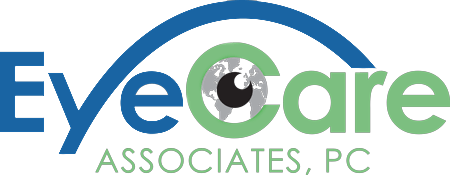We understand that our patients may be new to vision therapy, and we are here to help! Below are a collection of links we have pulled together about the benefits of vision therapy for a variety of symptoms and conditions.
Vision and Learning
Vision therapy can help children and adults seeking to improve their visual skills for effective reading, writing, and learning (including eye movement and focusing skills, convergence, eye-hand activity, visual memory skills, and more). To learn more about learning-related vision problems and improvement, as well as the myths of 20/20 vision, visit the following web pages:
- 20/20 Eyesight Screenings – Not Perfect for Learning and School
- All About Learning Related Vision Problems
- Vision Therapy Helps Struggling Students
- What is Vision Therapy? – Dr. John Abbondanza’s YouTube Series
- Told They Had 20/20 vision, but Still Had Problems
- Attention Deficit Disorders (ADD/ADHD), Dyslexia, and Learning Disabilities
Lazy Eyes, Crossed Eyes, Eye Turns, and Double Vision
Vision therapy programs offer much higher success rates for turned and lazy eyes when compared to eye surgery, glasses, or patching alone. Recent scientific research has disproven the long held belief that children with lazy eye, or amblyopia, can’t be helped after age 7. Our office successfully treats patients of all ages, though it is best to start therapy as early as possible. To learn more about crossed eyes, eye turns, or lazy eye, visit any of these web pages:
- About Eye Turns: Constant and Intermittent
- Amblyopia, Lazy Eye, and Strabismus – Not All The Same!
- Children’s Vision & Special Needs
- Eye Muscle Surgery: Treatment for Strabismus, Lazy Eye, and Intermittent Exotropia
- What is Seeing Double or Double Vision?
- Lazy Eye Success Stories
Poor Binocular (Two-Eyed) Coordination
Vision therapy helps individuals develop normal coordination and teamwork of the two eyes (binocular vision). When the two eyes fail to work together as an effective team, performance in many areas can suffer, including reading, sports, depth perception, eye contact, and more. To learn more about binocular vision please visit the following websites:
- What is Depth Perception and Stereo Vision?
- Adults and Children Gain Binocular Vision and 3D Depth Perception
- ults and Children Improve Eye Tracking and Eye Teaming
- The Eye Hop – Explore Your Binocular Vision
Convergence Insufficiency (CI)
Convergence Insufficiency (CI) is a common binocular (two-eyed) vision disorder in which the eyes do not work properly at near tasks. Although CI frequently causes headaches, eyestrain, and frustration with near work, this disorder is completely curable through vision therapy and is one of the most common diagnoses that we treat at EyeCare Associates. Additionally, recent scientific research — funded by the National Eye Institute and conducted at the esteemed Mayo Clinic — has proven that in-office vision therapy is the best treatment for convergence insufficiency. To learn all about convergence insufficiency, please visit:
- What is Convergence Insufficiency Disorder?
- What is Intermittent Exotropia caused by Convergence Insufficiency?
Stress-related Visual Problems
21st century life demands more from our vision than ever before. Many children and adults constantly use their near vision at school, work, and home. Environmental stresses on the visual system (including excessive computer use or close work) can induce blurred vision, eyestrain, headaches, nausea, and more. To learn about these visual problems and vision therapy, see:
- A Common Near Vision Problem: The Leading Cause of Eyestrain, Blurred Vision, Double Vision, and Headaches
- Eye Exercises for Blurred Vision Due to Reading and Computer Work
- More About Eyesight – Dizziness, Motion Sickness, Stomach Aches, Double Vision
- Relief from Headaches, Eyestrain, and more after Close Work
Concussions and Traumatic Brain Injuries
Vision is the most important source of sensory information, involving the flow and processing of information from the eyes and body to the brain. Because there is a close relationship between vision and the brain, Traumatic Brain Injuries including concussions and sports-related head injuries can disrupt the visual process and lead to a variety of uncomfortable symptoms. Fortunately, many of these symptoms can be improved through various rehabilitations, including vision therapy. To learn more about the role of vision therapy in the treatment of concussions and traumatic brain injuries, visit:
- Overview of Visual Problems Associated with Head Injuries
- Rehabilitation of Head and Brain Injuries through Vision Therapy
- Vision Therapy Success Stories – Brain Injury Rehabilitation
- Gray Matters: Regional Leaders in qEEG and Neurofeedback Treatment and Research, Westport, CT
Visual Rehabilitation for Special Needs
Vision therapy is frequently used as a treatment for children with developmental delays, visual-motor deficits, ADHD, and Autism Spectrum Disorders. Many patients with these conditions also have hidden visual issues which can delay learning and development. To read more about vision therapy as it relates to developmental delays or disorders and to see patients success stories, see:
- Autism Spectrum Disorders: Eye Examinations, Eyesight, and Vision Therapy
- Article: Diagnosis of Nonverbal Learning Disorder (NLD)
- Success Stories: Vision Therapy Helps Students Who’ve Been Labeled ADHD, Slow Learners, Lazy Students, and More
- The Flight Study is a global study for treating autism that includes vision therapy.
Optometric Organizations
Below is a list of various optometric organizations across the country, with various specialties and interests. These organizations list information for both patients and doctors, and typically publish recent articles and research submitted by member doctors.
- American Optometric Association
- Autism Source – Autism Society
- College of Optometrists in Vision Development (COVD)
- College of Syntonics in Optometry (CSO)
- Neuro Optometric Rehabilitation Association (NORA)
- Optometric Extension Program Foundation (OEPF)
